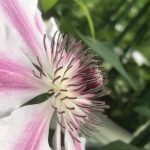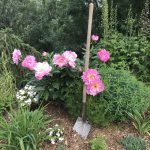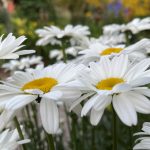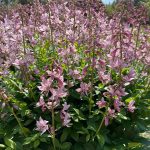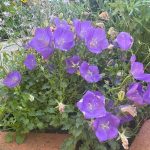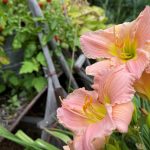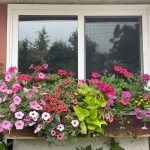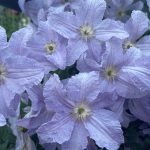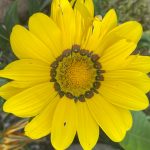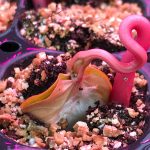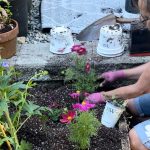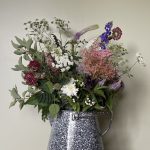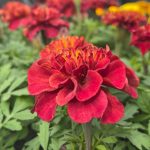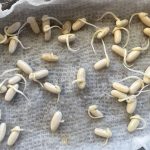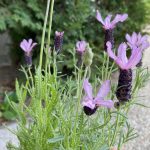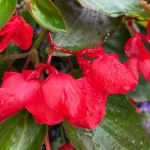Shady places are a gift on hot summer days. We gravitate to their shady, calm oases as they offer refuge from the heat, but some gardeners find shade gardens frustrating to tend.
We spend a lot of time in the shade, perhaps more than we realize, and it’s worth the effort to craft a shade garden that is lush and alive with colour.
Let’s cast some light on the dark side of your gardening space!
This blog will uncover why some plants fare better in the shade, how to determine a successful shady spot, and how to care for shade-loving plants. I will bring this all together with a list of some great annuals and perennials to grow in the shade to infuse colour and spark life into your shady garden space.
Why Some Plants Fair Better in Shade

In the plant world, light is life.
The quantity, quality, and intensity of available light determine which plants can grow in a garden. Some plants require bright sun all day long, and others depend on shade to thrive.
Research shows that shade plants can process far-red light wavelengths of the light spectrum for photosynthesis more effectively than plants that grow in full sun. Natural sunlight has nearly equal amounts of blue, green, and red light. Shade plants use red light more efficiently than sun-loving plants, and full sun plants develop pigments & waxy coatings to protect their leaves from burning in the sun.
Just as sun-lovers have special adaptations for life in the sun, shade-loving plants also have unique characteristics that allow them to make the most of the available light on their side of the garden. These unique features are called the ‘shade avoidance’ response:
- Shade plants tend to have larger and longer leaves to provide more surface area to allow them to capture as much light as possible.
- Leaf configurations of shade-loving plants have less overlap than plants growing in high sun areas not to waste one morsel of light in the shade.
- Plants that grow in low light regions have thinner leaves. The top outer layer of a leaf is called the ‘cuticle’. This cuticle is less dense in shade plants to make chloroplasts more accessible. Chloroplasts are plant cells that house the photosynthesis machine. Chloroplasts carry a green pigment called chlorophyll that assists in photosynthesis and gives plants their green colour.
- Most shade plants can tolerate early morning sunshine when the light intensity is low.
How to Determine a Successful Shady Spot

Shady areas vary greatly, and most shaded spots can house thriving gardens, except for directly under an evergreen tree. Evergreens have shallow root systems that take up massive amounts of water, leaving the soil so dry that even weeds can’t grow there. The soil under an evergreen also tends to be more acidic, but the real issue with this spot is the dryness.
The best growing space for a shade garden is one that has high quality, loose, loamy soil that has good water retention and drains well.
The secret to getting the right plant match in a shade garden is to know your growing space.
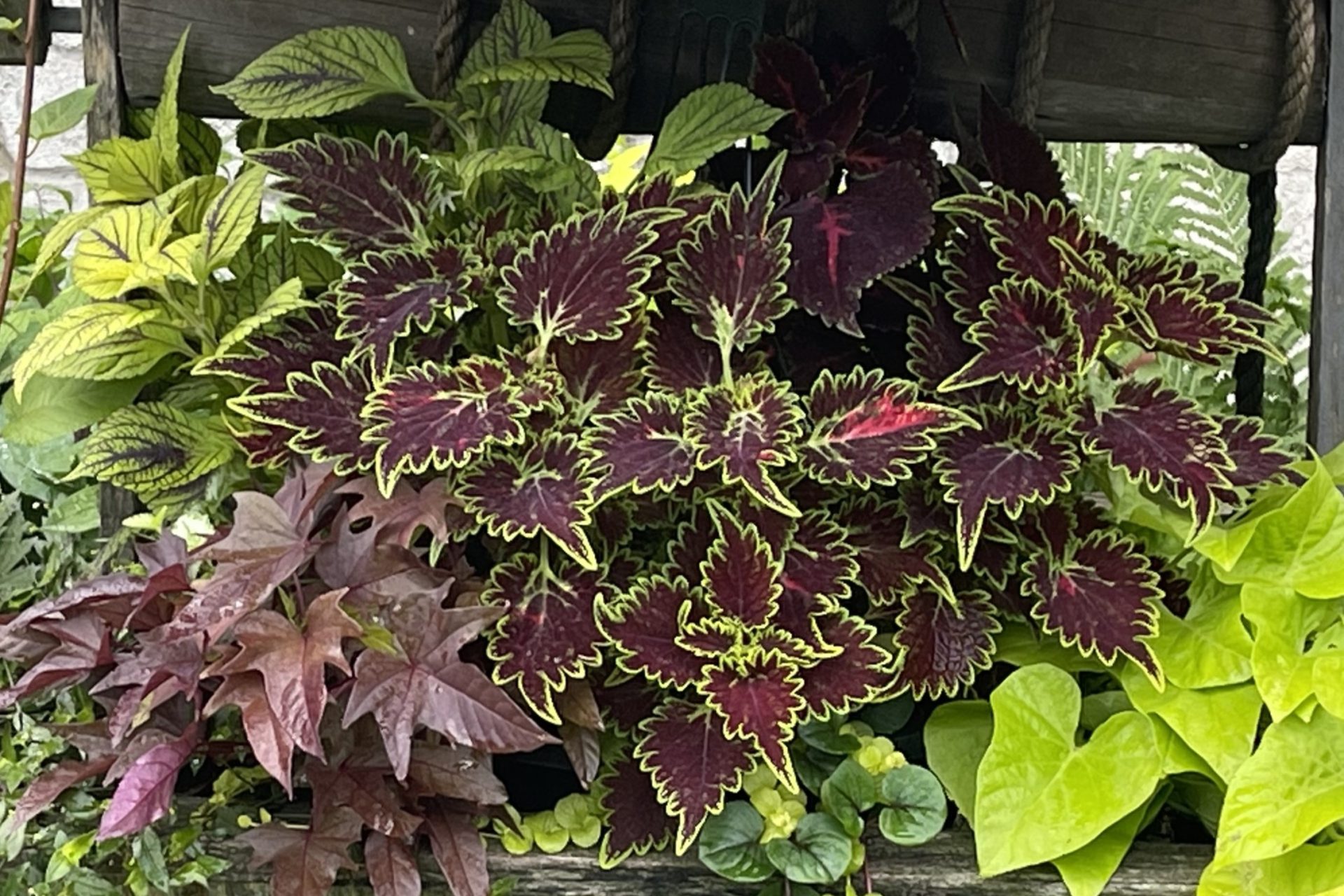
1. Figure Out How Many Hours of Shade and Sunshine an Area Receives
Where does the sun first hit your gardening space in the morning (and it could be that it never hits it)?
How does the shade change throughout the day?
Is anything blocking the sun in east, south, or west-facing gardens? Trees, fences, eves, play structures, pergolas, and other buildings can block sunlight.
2. Determine the Quality and Intensity of the Shade
Dappled Shade has filtered light, allowing light to shine through leaves. This kind of shade is typically under a deciduous tree or shrub.
Evergreen trees usually create full shade but observe how it affects your location.
Part Sun areas receive 4-6 hours of direct sunlight, like a spot facing east.
Part Shade is a site that gets quite a bit of sun, with just 4 hours or less of shade. Shade like this happens when something like a tree blocks the sun for a small part of the day.
Deep Shade or Full Shade is where the shade lasts all day with no direct sunlight. This kind of spot gets only indirect light.
3. Assess the Quality of the Soil in the Shaded Spot
Soil quality has an enormous influence on the success of a shade garden.
Dig in and take a good look at the soil. Is the soil clay based and hard, porous, loamy, or rich in organics? Is the soil moist? Is it dry?
How well does the soil hold moisture? Does the water stay on top or drain off when watered, or does the soil absorb and retain the water?
How to Care for Shade-Loving Plants
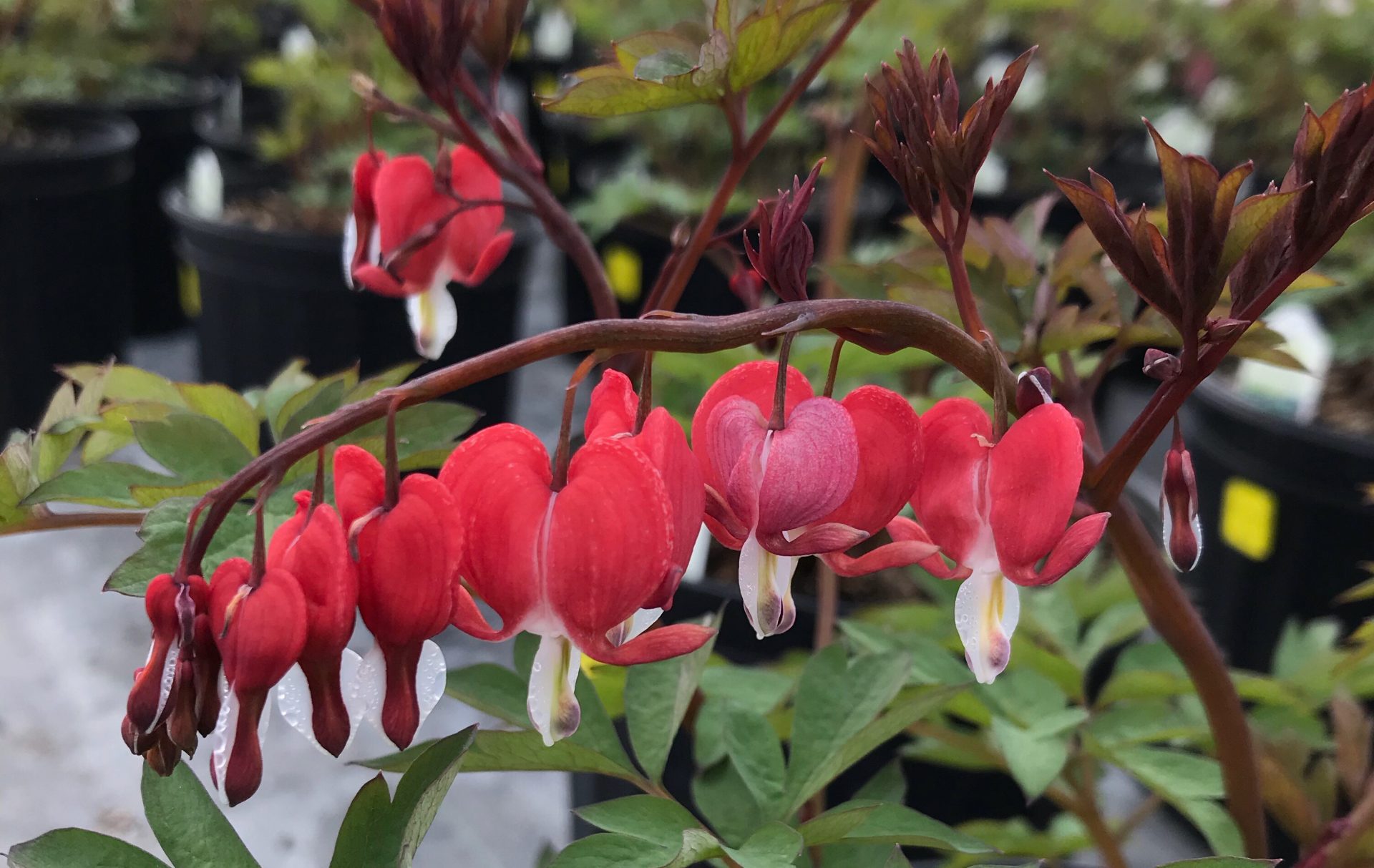
A shady growing space is unique as it receives less sun, has higher humidity, retains more moisture, has cooler daytime temperatures, and has fewer nighttime temperature swings than its sunny counterparts. Plants in shade gardens have lower metabolic activity than those growing in bright places.
How cool and moist a shade garden stays depends on how shady it is. Areas that get no sun are the coolest and wettest, and places with four or less hours of shade daily will be warmer and drier.
You will see this environmental difference played out in spring as the snow melts slower and the ground thaws three to four weeks later in shade gardens than sun gardens. Perennials in full sun flower beds will be up and blooming while hostas are just thinking about poking their noses out in a wholly shaded garden.
Stay patient in spring and allow the shade garden to emerge and develop in its own time.
Maintaining the right hydration balance can be tricky in shade gardens because they stay moister if there is no root competition from surrounding trees. Shade gardens can go for long periods without supplemental water, so always assess moisture levels before watering and only water when dry. For example, shade plants like Begonias and Impatiens are susceptible to mildew and stem rot when the soil is too wet, and the resulting area stays too humid.
Fertilize shade gardens biweekly because plant metabolic demands are lower.
Mulch shade gardens to maintain moisture levels and keep weeds down. It may seem that mulch would make a shade bed too wet, but it doesn’t unless eavestroughs are draining there. It is better to allow them to drain in sunny garden beds.
Perennials and Annuals for Shady Areas
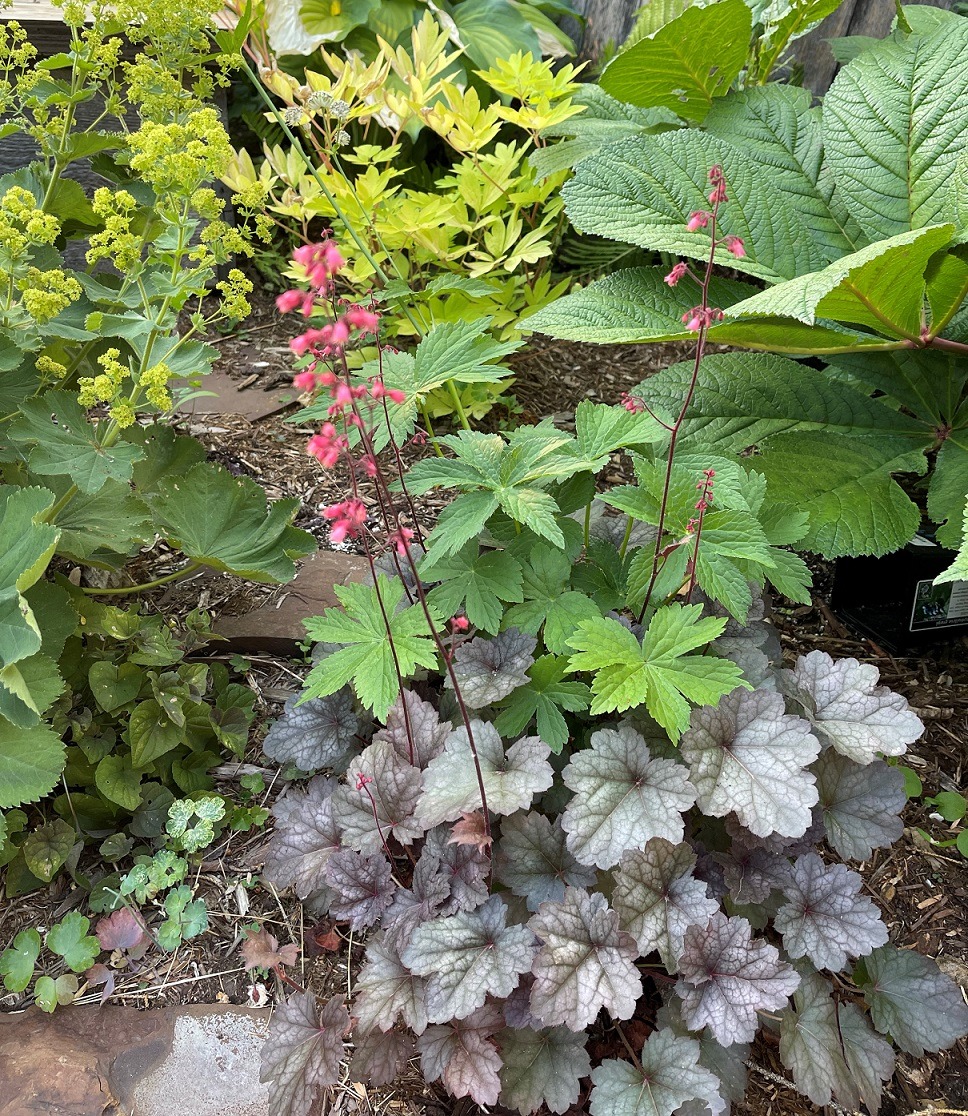
Here is a note on deciphering plant tags before we get into the specifics of flowers that work well in shade gardens. Use this reference to help make your plant decisions:
Deciphering Plant tags:
- Full Sun: 6 hours or more of direct sunlight
- Part Sun: 4-6 hours of direct sunlight
- Part Shade: 2-4 hours of sun per day
- Full Shade: less than 2 hours
Great Perennials to Grow in the Shade
Perennials are the workhorse of the shade garden. Shade perennials provide a reliable backdrop of colour and structure year in and year out. Shade gardens can feel dark, so consider planting varieties with variegated or chartreuse leaves to brighten up a shady spot.
Here are some fantastic perennial plant options for shady perennial gardens in zone 3 and zone 4 gardens:
Dicentra (Bleeding Hearts)

Dicentra tolerate varying degrees of light exposure from full sun to full shade. Bleeding hearts have lovely spring blooms in white, pale pink, dark pink, and red. Deadhead the blooms, there may be a small second bloom; and after that, all varieties have lovely foliage on display all summer.
Gold Heart Dicentra is a fun variety that lights up the shade with its chartreuse foliage that lasts beautifully all season. Its blossoms are medium pink. All of the other Dicentra varieties have solid green leaves, but the flower colours are different: Spectabilis (pink blossoms), Alba (white flowers), Valentine (red flowers), Cupid (light pink flowers)
Hostas

Hostas are classic shade perennials, very hardy and reliable, and they provide a structure or canvas for shade gardens. Some hostas are sun tolerant, but they all grow well in low light.
Foliage leaf colours and patterns abound, ranging from bluey greens to bright greens and chartreuses. Hostas are summer bloomers with white or lavender flowers arising on scapes above the foliage. Some varieties are lightly scented. Some of my favourite varieties are Stained Glass, Liberty, Praying Hands, Rainforest Sunrise, Loyalist Patriot, Fire & Ice.
Heuchera (Coral Bells)

Heucheras are one of the most versatile collections of perennial flowering plants. Heuchera grow well from full sun to full shade locations. Different varieties are tolerant of varying light levels, so be sure to check labels.
Heuchera have a wide range of foliage colours from every shade of green, chartreuse, yellow, silver, burgundy, red, purple, and black. Long lasting spires of delicate bell-shaped flowers in shades of white, pink, red, or yellow bloom above the foliage in summer.
Ligularia (Leopard Plant, Ragwort)
Ligularia is a perennial that loves the shade so much you could say it is allergic to sunshine. When the sun’s rays hit the leaves, they look wilted until the sun moves and then it perks back up. Ligularia love the humidity and moisture of a shade garden.
All varieties of Ligularia bloom golden yellow in summer in two basic flower forms, making it perfect for illuminating a shade garden. They bloom on spires or as clusters of yellow daisy-like flowers above their deeply lobed large dark green or burgundy leaves. Reliable varieties for our area include Rocket, Little Rocket, Little Lantern, Britt-Marie Crawford, and Othello.
Astilbe (False Spirea)

Astilbes are another deep shade lover, but they tolerate the early morning sun. Their fern-like foliage contributes a delicate texture, and their fluffy blossom spires add colour in summer and elegance to a shady area in shades of white, pink, or red.
Plant Astilbes shallow so that their roots don’t suffocate, water them in well and let them grow. They don’t like to grow in standing water, but they thrive in moist soil.
Other excellent perennials for shade:
- Alchemilla (Lady’s Mantle)
- Aconitum (Monkshood)
- Actea/Cimicifuga (Bugbane, Black Cohosh)
- Aquilegia (Columbine)
- Astrantia (Masterwort)
- Bergenia (Elephant Ears)
- Brunnera (Siberian Bugloss)
- Dicentra Formosa (Fernleaf Bleeding Heart)
- Primula (Primrose)
Great Annuals to Grow in the Shade
Annuals are flowers planted afresh each spring because they aren’t zone hardy like perennials.
A mix of annual and perennial plants can make a lovely shade garden. Perennials provide a backdrop of structure and colour, while annuals can supply constant colour and bridge colour as perennials move in and out of their bloom season.
Try some of these beautiful annuals in your shade garden:
Begonias
Begonias come from the lower canopy of tropical rainforests, so they thrive in warm, moist, shady areas and are perfect for our zone 3 and zone 4 shade gardens.
Begonias provide a lot of colour power, and they bloom all season if they are deadheaded regularly. Avoid overwatering Begonias; they hold a lot of water in their stems and leaves. The base of the stems will rot if they stay too wet.
Check out these excellent Begonia choices:
Dragon Wing Begonias
These Begonias have an amazing presence. They have a taller growth habit, reaching between 30-45 cm (12-18″) in height with glossy spear-shaped green leaves.
Dragon Wing Begonias bear clusters of single flowers in shades of pink or red, and they tolerate up to six hours of sun, but the sun exposure should occur in the early morning or later evening.
Tuberous Begonias
Tuberous Begonias are the powerhouse of a shade garden with intense colour impact all summer with large, fully double flowers in every colour of the rainbow except for blues and purples.
They thrive in mostly shaded conditions but tolerate very early morning and late evening sun. This type of Begonia maxes out at 25 cm (10″) in height.
Fibrous Begonias (Wax Begonias)
Fibrous Begonias are smaller statured Begonias that produce clusters of single flowers above their glossy leaves. Flower colours vary in shades of pink, red, and white.
Their leaves can be deep green or burgundy. Fibrous Begonias can tolerate moderate amounts of sun, especially when humid. Fibrous Begonias reach 20 cm (8″) in height.
Solenia Begonias (Sun Begonias)
Solenia Begonias are a newer, versatile type of Begonia introduced recently, and they are gaining popularity. Solenia Begonias grow well in full shade and sun locations, but not in the blasting, hot sun.
This is the perfect plant if you have a shade garden that gets sun for part of the growing season and progresses to a full shade zone as the sun moves south.
They bloom profusely all season with clusters of medium sized rose shaped flowers in white, shades of coral, red, and shades of pink that require little deadheading growing a height of 20-25 cm (8-10″).
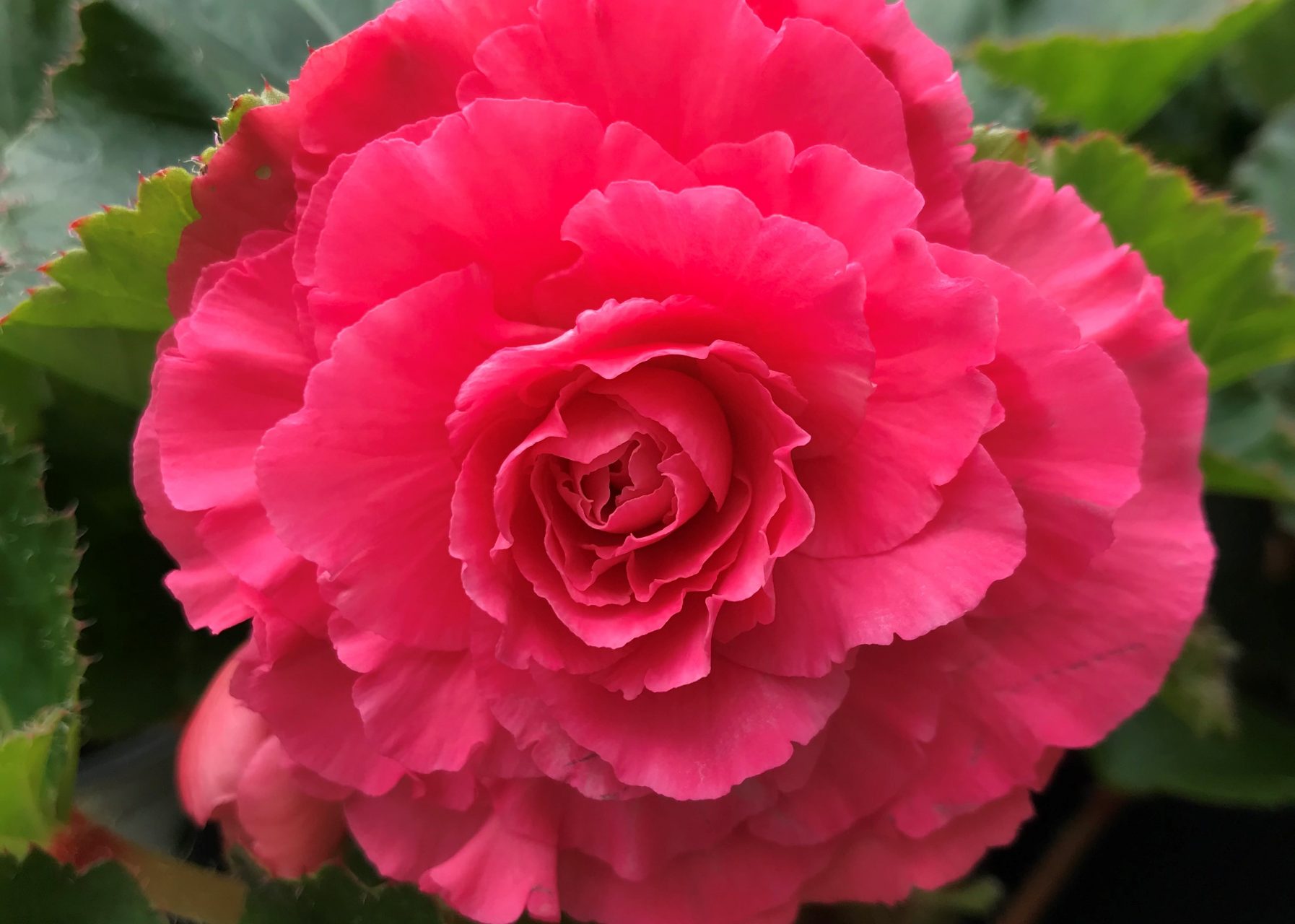
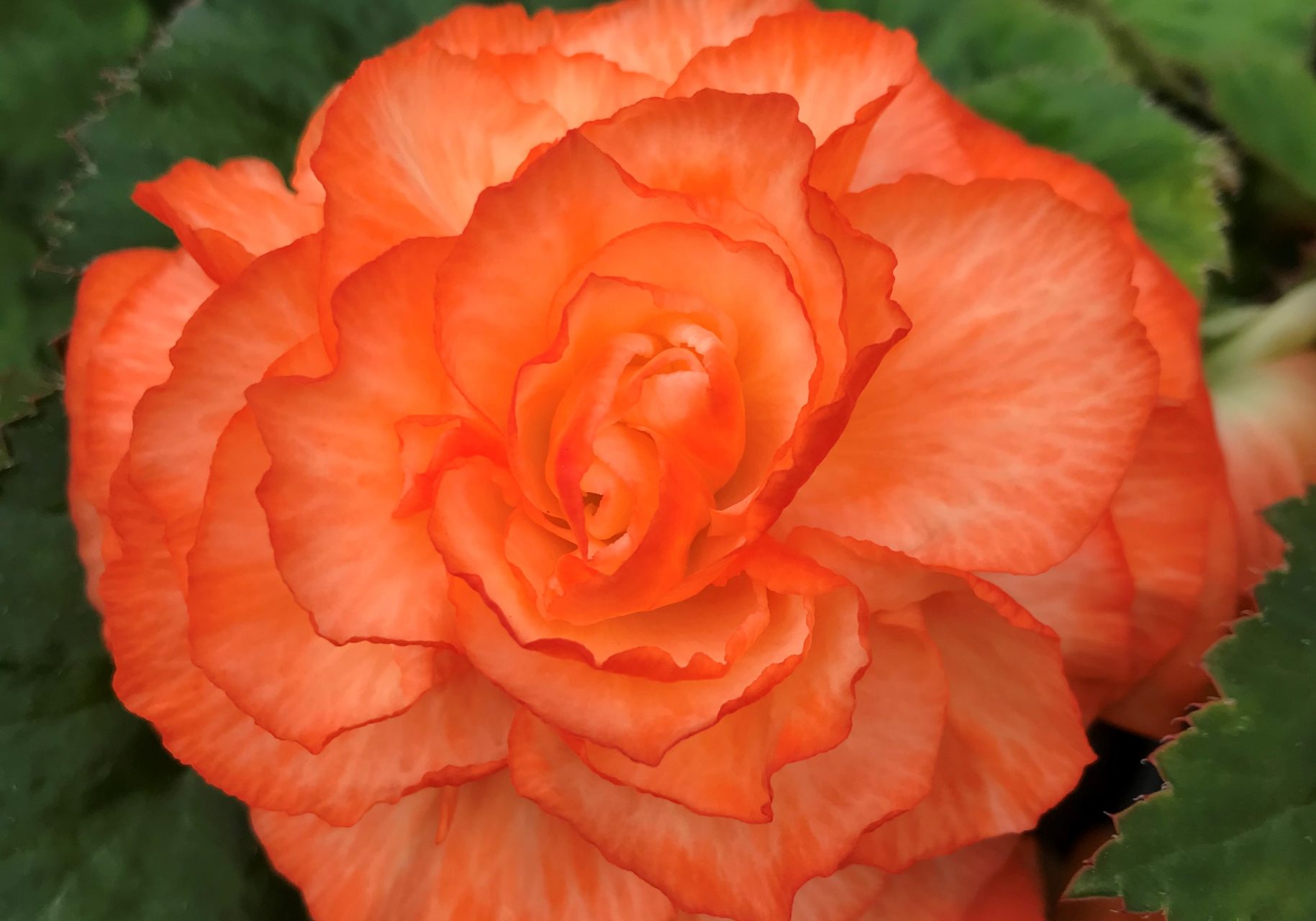
Impatiens
Impatiens are another shade flower with their origins in the tropics. They, like Begonias, thrive under the canopy in warm, humid conditions. Impatiens are flexible plants, tolerating morning sun and full shade.
Impatiens are available in varieties with single flowers or double flowers and they add colour to a shade garden all season in shades of white, pink, red, and purples on stems reaching average heights of 20-25 cm (8-10″) .
Sunpatiens
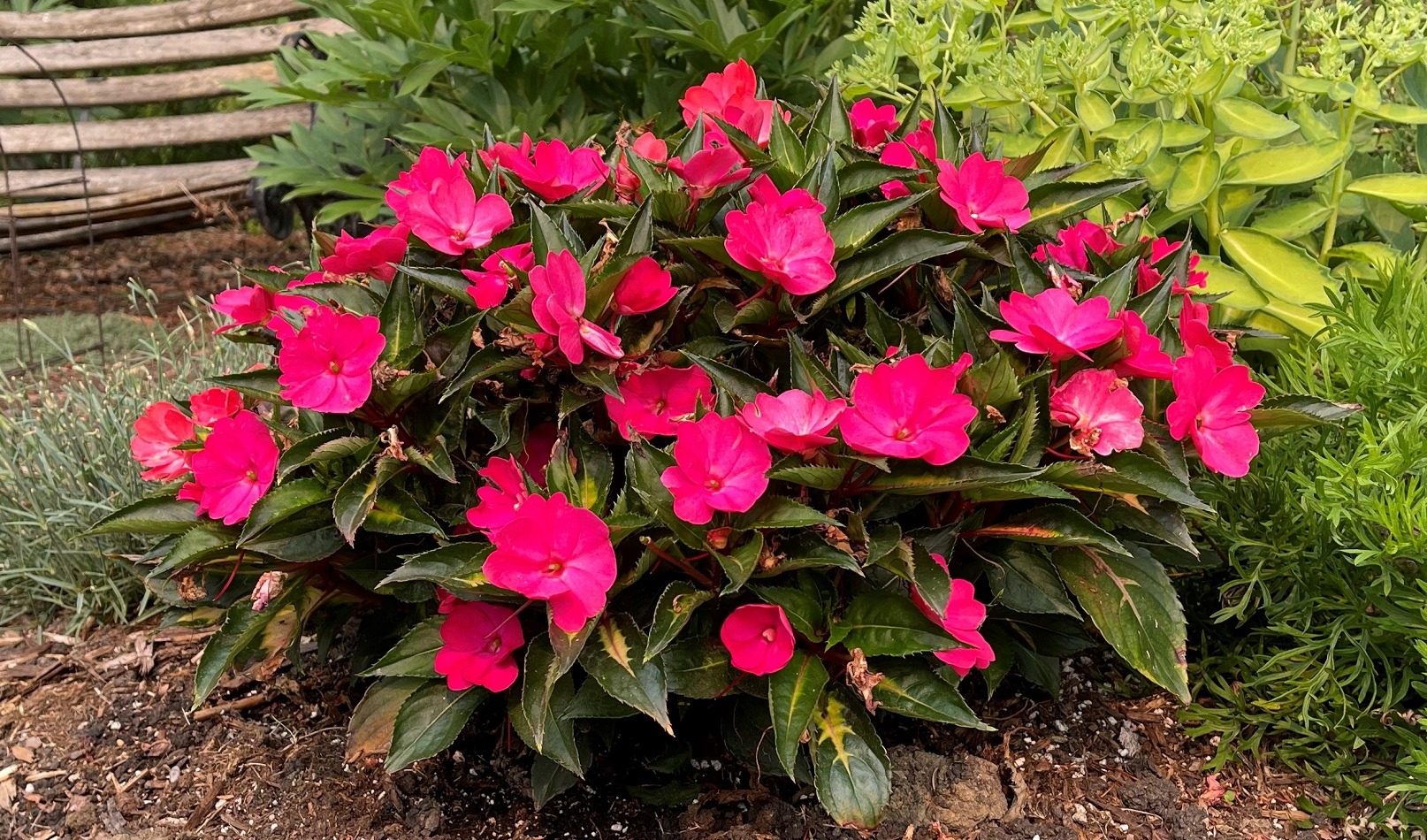
Sunpatiens are big, bold, and beautiful sun tolerant Impatiens with a lot of colour power with the bonus of mildew resistance. Sunpatiens grow well from full sun to full shade locations and anything in between.
Sunpatiens are divided into two basic groups: Vigorous growers and compact growers. Vigorous growers reach approx. 45-100 cm (18-36″) tall, and the compact growers reach heights of 35-81 cm (14-32″).
Read their labels carefully to get the right one for your needs. Sunpatiens bloom all summer with large flowers atop their foliage canopy. Flower colours are lavender, red, coral, orange, pink, and white shades. They also have fun foliage options, sporting solid dark green leaves or variegated patterns.
Pansies and Violas
Pansies and Violas work well in shade gardens that receive 4-6 hours of sun, even if divided up between morning and evening exposure.
These flowers are cool weather lovers with their most shining moments in early spring and late summer as the weather is cooler. Growing in the shade gives them a break from the hot sun, and they fair better.
Pansies and Violas add whimsy to a garden, and they are available in every imaginable colour and continue to bloom as long as they are deadheaded.
Related: A Complete Guide to Growing Pansies, Violas, and Their New Panola Cousins
Other good annuals for shade include:
- Abutilon (False Maple)
- Coleus
- Fuchsia
- Schizanthus
- Iresine
- Nemesia
- Plectranthus (Nico)
- Scaevola (Purple Fan Flower)
- Torenia
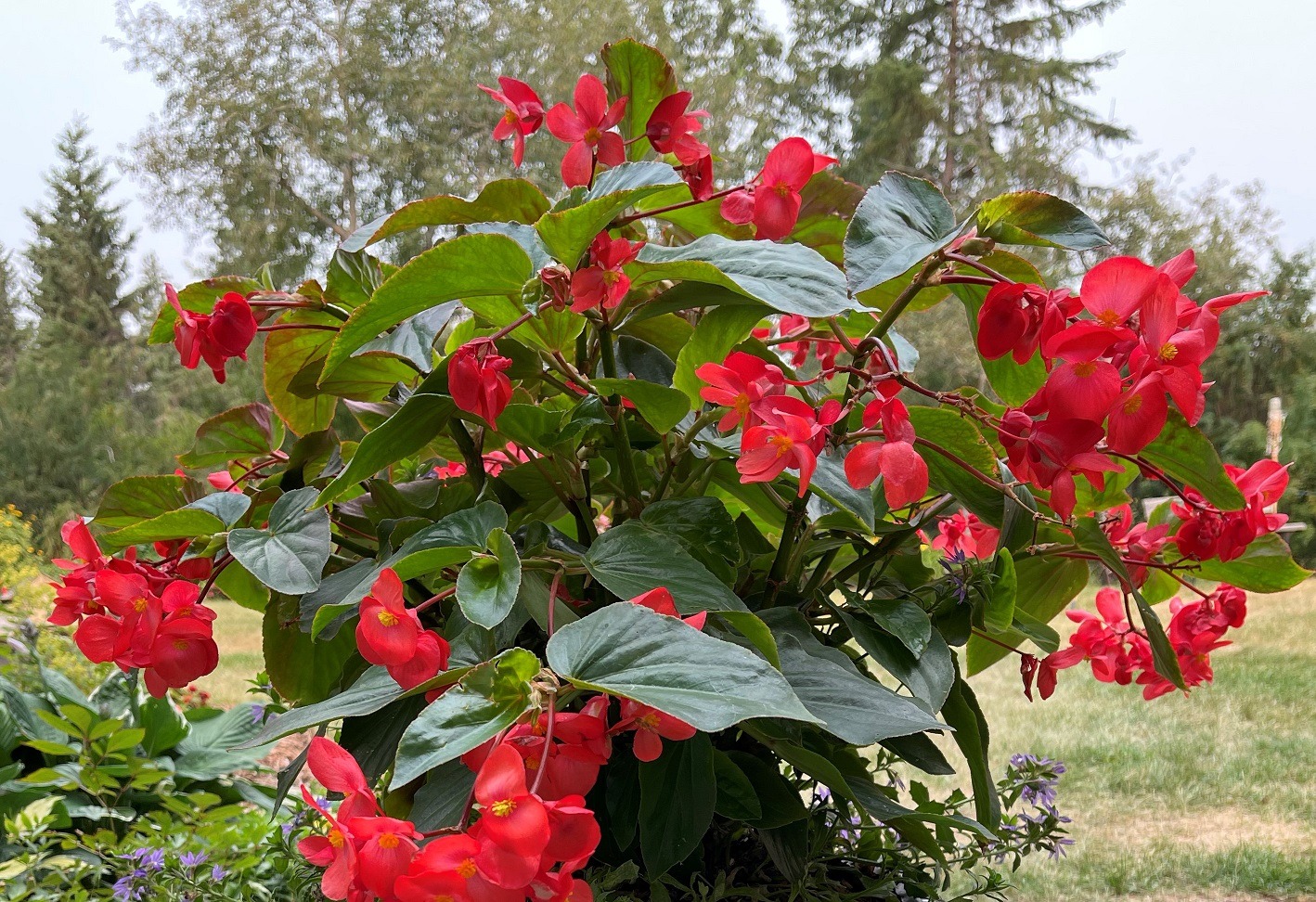
There is Life After Shade
And there is life in the shade.
When you think about it, we spend a lot of time in the shade because shade gardens are places of tranquility that give us reprieve on hot summer days. Crafting a beautiful garden in the shady areas of your yard will provide a glorious space that is lush and alive with colour. This isn’t a pipe dream, it’s not that difficult to attain a beautiful and colourful shade garden, whether it’s in-ground or on a balcony with the right combination of plants.
Get to know your shady space, add colour, and just a little water!
©Sharon Wallish Murphy ©Gardening with Sharon



